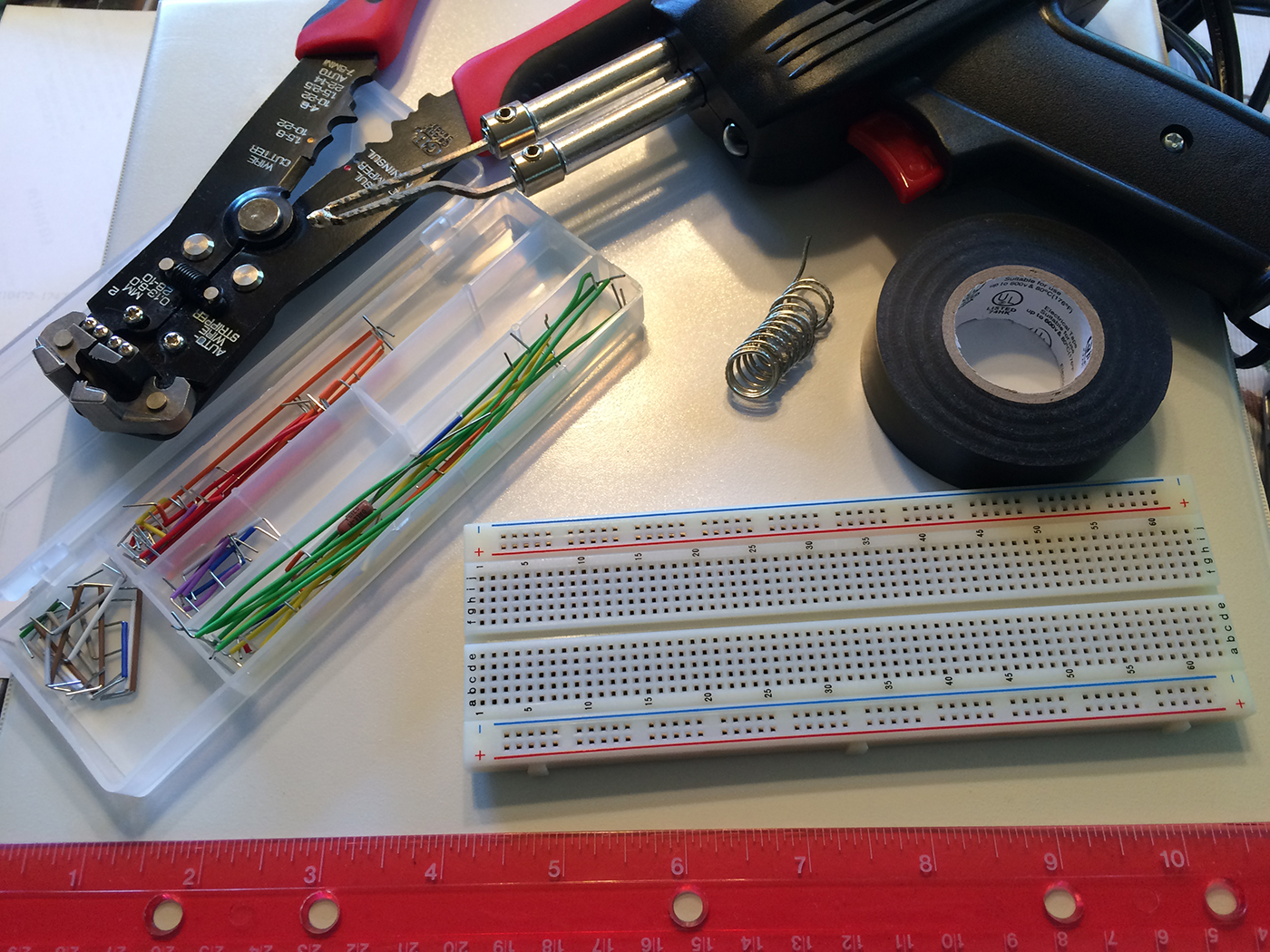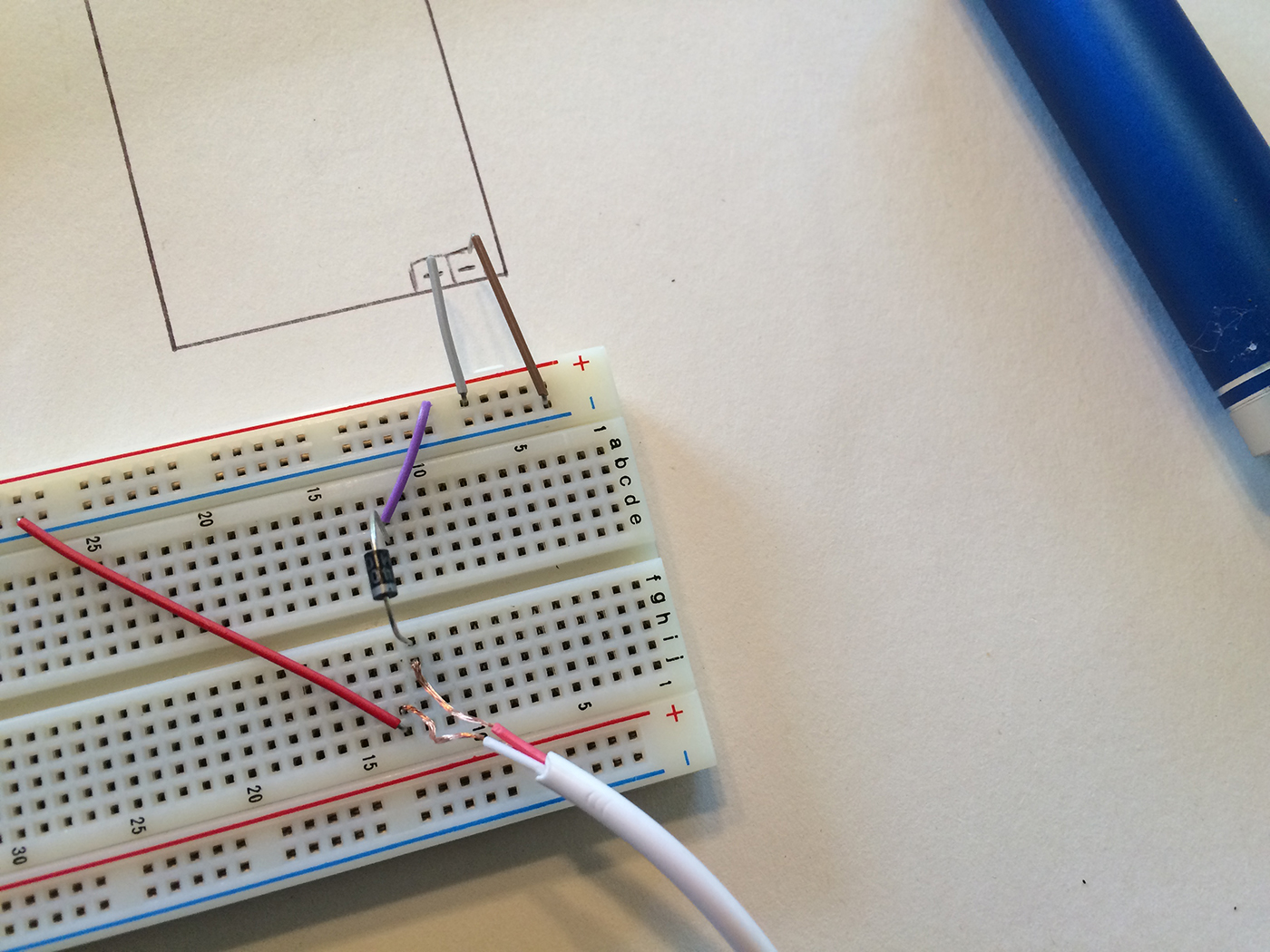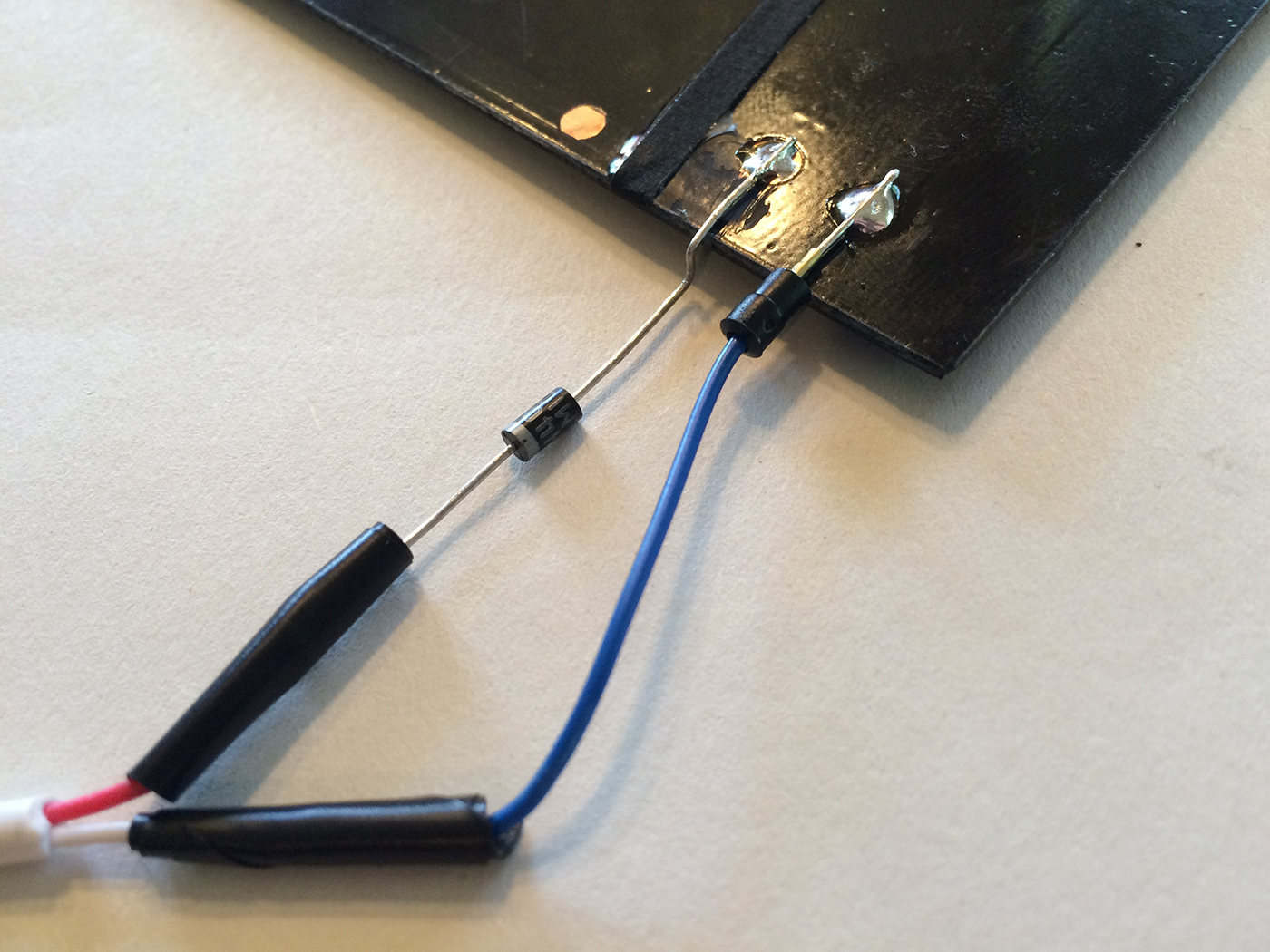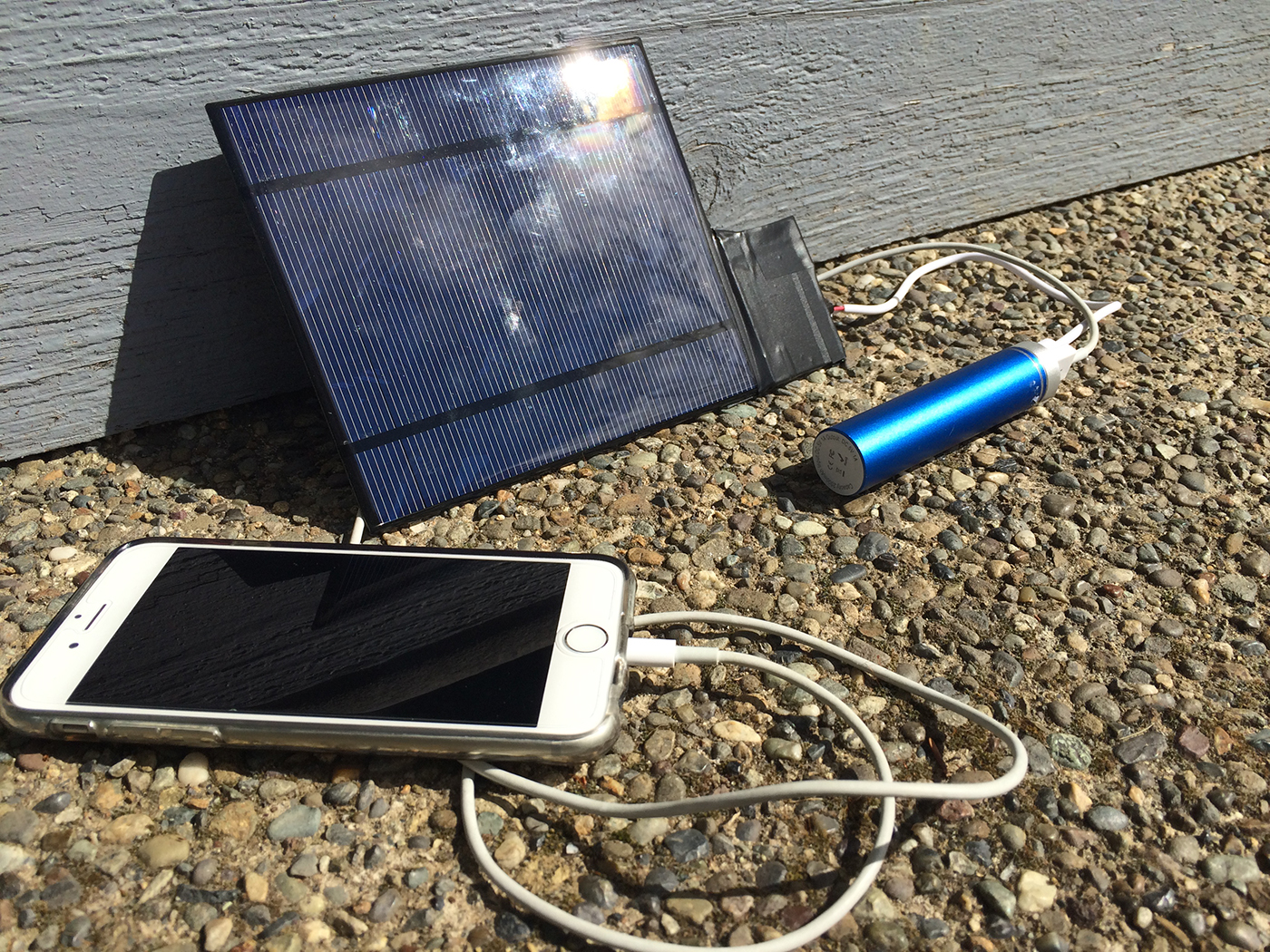
Light at the End of Your Battery Life
“Don’t cry when your battery dies as the sun will soak up your tears.”
How many times have you whipped out your phone for a picture, only to notice the bright red indication of a dead battery? Don’t let batteries hold you back! Inspired by user ASCAS, this project puts power back into your hands.
Parts
- Solar Panel
- 1N4001 Diode
- Power Bank and Micro-USB cable
- Soldering Gun and Solder
- Electrical Tape
- Wire Stripper
Features
- Fully charge your power bank in 40-120 minutes.
- Sustainable, reliable source of energy, ideal for charging USB devices
Efficiency
Comparing the power bank’s rated capacity to your device’s rated capacity:
Example:
(iPhone-Rated Capacity) / (Power Bank-Rated Capacity)
[1.4 mAh / (2200/960) mAh] = 61%
About 61% of the energy coming through the solar panel/battery combo
reaches your phone’s battery.
Let’s Build!
Here is an overview of the flow of electricity. From the solar panel, through the diode, into our power bank and charging our battery.
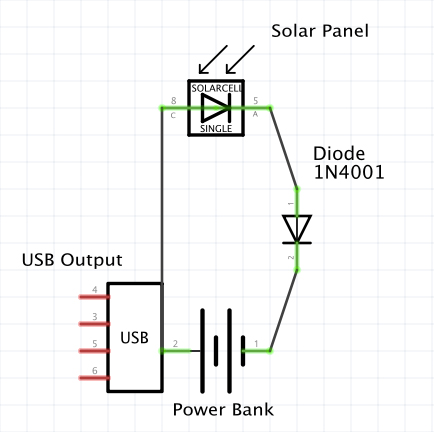
The diode is crucial in this design to prohibit current from flowing backwards into the solar panel — effectively draining our power bank.
Clear some space and plug in that soldering iron!
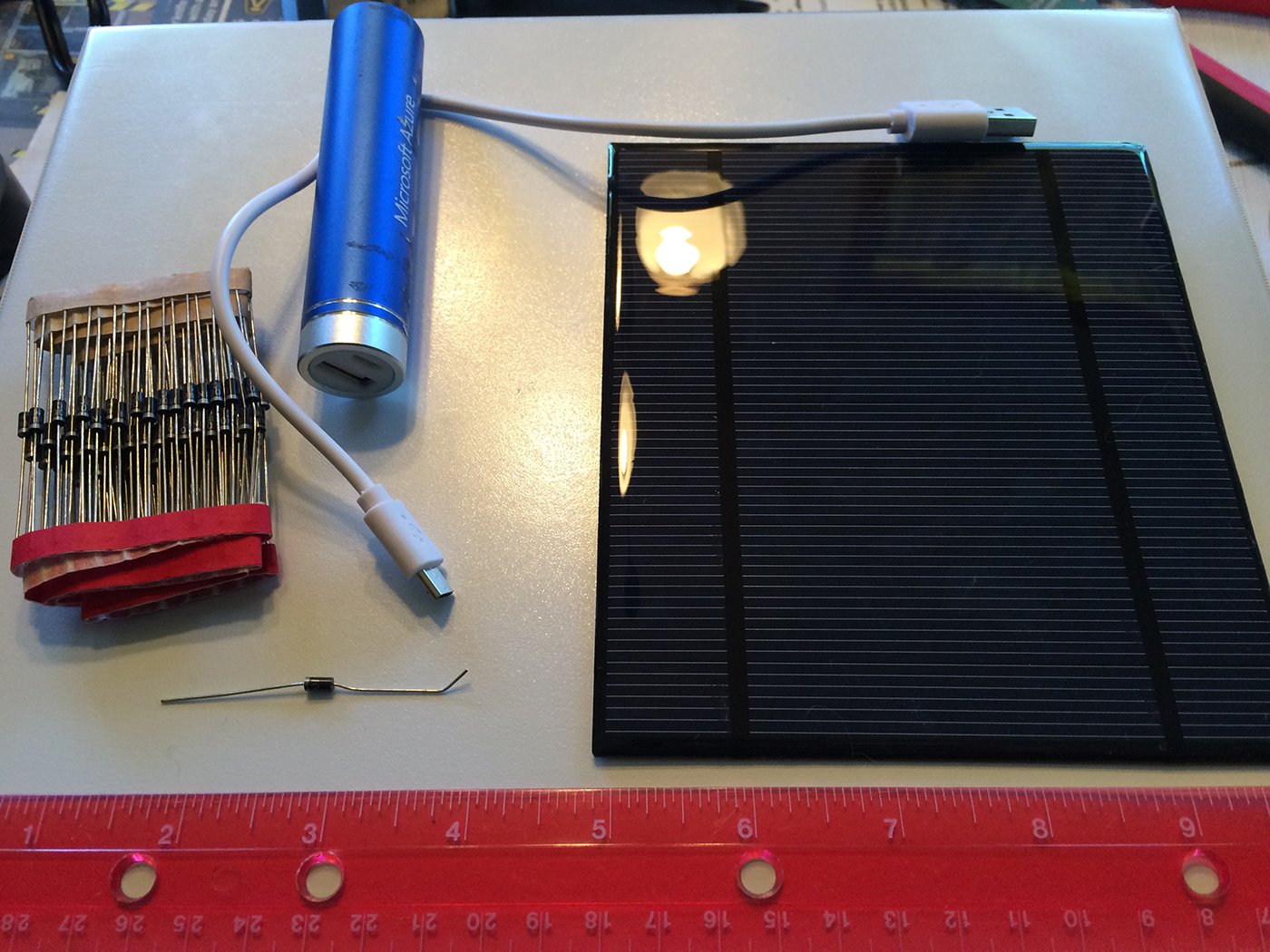
Cut the USB side of the USB-MicroUSB cable and strip of about a quarter of an inch of cable from each of the two cables underneath.
If you have access to a multimeter, now is a good time to prototype and make sure our circuit is in working order before we start putting too much tin down on copper. The breadboard below shows how we design our circuit.
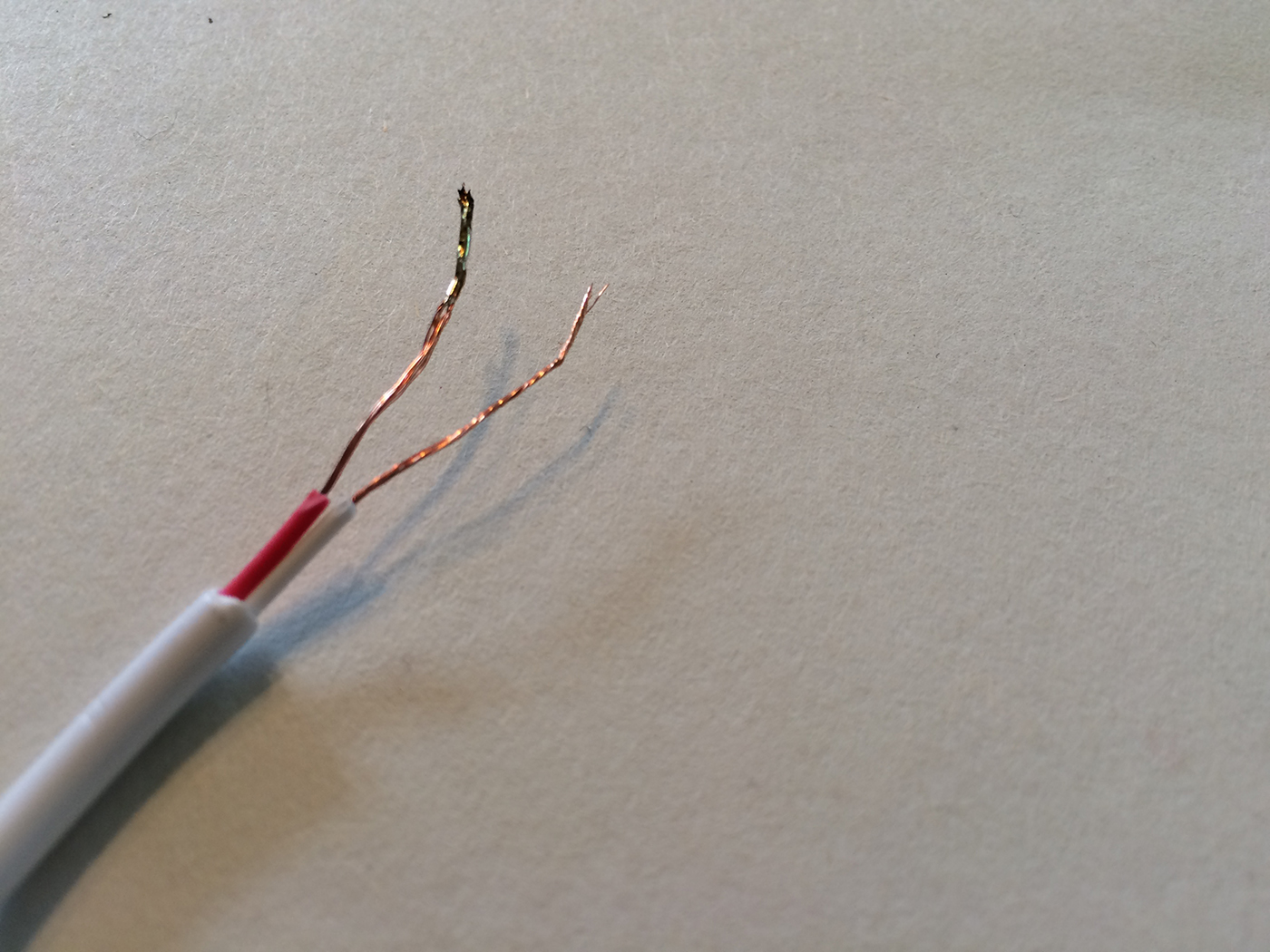
We want the diode to point in the direction of our current from the solar panel. That is, the small band on the diode should point towards our power bank.
Make a good physical connection with the outputs of the solar panel (one terminal is marked with a “+”).
Solder away!
Optionally, for a stronger mechanical build, cut apart some old plastic and make a base for our wires coming off of the solar panel.
For extra durability, consider stuffing the entire device in a Tupperware container or other portable case.
Take your finished product out into the sun and go have a blast!
What’s the Point?
As we roll out of Spring, Washington weather is picking up. With Music Festival Season right around the corner, the sunshine will be an ever-present companion. The motivation for constructing this project comes from a desire to keep on rocking out in the breeze. The Gorge venue calls for all-day getaways from the confines of walls and power-sockets. Charging your phone from the car battery runs the risk of killing your car and requiring jumper cables. Don’t let those good vibes be replaced by a non-responsive, two ton piece of metal.
“Critical Making” is a term that refers to the ideology around making things. The creator of the term, Matt Ratto is the Assistant Professor and director of the Critical Making lab in the Faculty of Information at the University of Toronto. In an interview with Garnet Hertz he talks to the role of artistic choice:
“Technologies are made for a function, they’re made to solve a problem. And although I don’t think the artists follow such instrumental views on technology, the makers and the maker movement definitely has that in it” (Hertz, 8).
Artistically, not only does this piece seek to make a political statement in fighting for sustainability, it serves a direct purpose. As the maker, I prioritized the feature of plug-and-play; there is no rate delimiting for different devices or switches to turn on and off.
Form-fit design and a desire for aesthetics necessarily limits the size of portable device batteries. Don’t let the limitations put in place by the hardware designers hold you back. This project was great in experimenting with some new hardware and building out a relatively simple circuit. I deviated from the initial instructions, adding in a diode to prevent current from flowing out of our battery towards the panel. Give this robust system some action. Suck down that natural power and juice-up!
PDF Version
Sources
“DIY Portable USB Solar Charger.” Instructables.com. N.p., n.d. Web. 10 Apr. 2015. http://www.instructables.com/id/DIY-Portable-USB-Solar-Charger-20-4-Ports/
Hertz, Garnet. “Matt Ratto Interview.” (n.d.): 1-10. Concept Lab. Web. 10 Apr. 2015.
<http://conceptlab.com/criticalmaking/PDFs/
CriticalMaking2012Hertz-Conversations-pp01to10-Hertz-RattoInterview.pdf>
